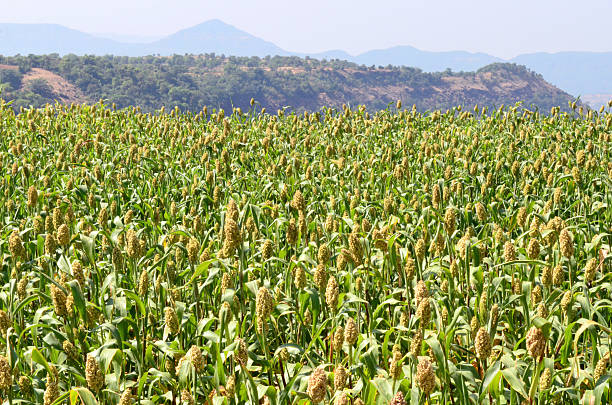Introduction – Current State of Play: The Millet Sector in India
India’s millet market is in the spotlight like never before. With shifting government policies, global trade changes, and weather disruptions shaking supply chains, the millet industry is undergoing rapid transformation. The market is riding a wave of increased demand driven by health-conscious consumers, urban dietary shifts, and international interest—yet it’s also battling challenges like price spikes and production issues.
In short, if you’re sourcing millets in India, staying alert isn’t optional—it’s essential. Whether you’re a buyer, exporter, or processor, being informed on the latest developments can mean the difference between seizing opportunity or being left behind.
Deep Dive – What’s Making Headlines? Key Recent News & Impacts
So, what’s all the buzz about?
-
Millet Prices Soaring: As of late 2023, millet prices hit record highs due to a perfect storm—skyrocketing demand and declining production. Reports show price hikes between 40% to 100% on some varieties.
-
Production Disruptions: Droughts in Maharashtra, Karnataka, and Telangana, along with excessive rainfall in Andhra Pradesh and Kerala, have slashed yields. Add to that logistics bottlenecks, and supply chains are feeling the heat.
-
Government Push for Exports: The Indian government has laid out a robust plan to promote millet exports. This includes supporting international expos and buyer-seller meets to help farmers and exporters connect with global markets.
-
Innovation in Millet Products: From millet pasta to ready-to-eat snacks, product innovation is expanding the market. Urban consumers are leaning heavily into these healthier alternatives.
-
Year of the Millet Momentum: The buzz from 2023 being declared the International Year of Millets is still strong, with both domestic and international interest peaking.
This evolving scenario means businesses must rethink sourcing strategies, build agile supply chains, and align with dependable suppliers.
Top 3 Verified Millet Suppliers in India – Relevant in the Current Climate
Based on export performance, certifications, global reach, and buyer feedback on Freshdi, here are the top 3 millet suppliers in India for Quarter 3 of 2025.
1. Taakshvi Agri Products Pvt. Ltd.
- Known for: High-quality millet grains and bulk supply capability.
- Certifications: FSSAI, APEDA, ISO.
- Strengths: Consistent delivery timelines, strong export network across the Middle East and Southeast Asia.
- Why Now: Their diversified sourcing regions allow them to maintain stable supply even during weather-related shortages.
2. VARDAN EXIMPORT
- Known for: Competitive pricing and wide product variety (including pearl and finger millets).
- Certifications: Organic, ISO, HACCP.
- Strengths: High buyer satisfaction on Freshdi, responsive customer service, and flexible MOQs.
- Why Now: They’ve rapidly adapted to supply chain challenges by shifting procurement to less-affected regions.
3. Rosebuds Lifestyle Enterprises
- Known for: Niche millet-based products like flour blends and ready-to-cook mixes.
- Certifications: USDA Organic, India Organic.
- Strengths: Ideal for health-focused brands and premium retailers.
- Why Now: Their value-added product line is well-positioned for the booming health food trend.
Dynamic Ranking Note: Platforms like Freshdi offer real-time insights such as “Suppliers of the Month” or “Top Exporters of the Quarter,” based on actual buyer reviews, RFQ performance, and fulfillment metrics. These rankings may shift each quarter, reflecting fresh data and supplier activity.
Market Navigation – Strategic Responses to The Current Millet Landscape in India
Let’s talk strategy. In this fast-moving market, how should businesses adapt?
Riding the Demand Wave
Health is wealth—and consumers know it. Millets, rich in fiber, protein, and essential minerals, are being hailed as superfoods. Urban demand for millet pasta, noodles, and organic flours is driving a boom. If you’re in the health food or wellness sector, this is your golden window.
But here’s the catch: demand is outpacing supply.
Tackling Supply Side Crunches
Weather woes have thrown a wrench into production. Drought in some states, floods in others—it’s a logistical and agricultural mess. Price volatility is now a serious concern, with some varieties nearly doubling in cost. For buyers, this means reconsidering procurement geography and timelines.
Sourcing Smarter, Not Harder
Here’s how smart businesses are staying ahead:
-
Diversify Procurement: Don’t put all your millet in one basket. Tap into multiple regions to hedge against climate risks.
-
Back Farmer Producer Organizations (FPOs): FPOs can streamline sourcing, improve traceability, and ensure farmers get fair prices.
-
Invest in Storage & Logistics: With millets being vulnerable to post-harvest losses, better infrastructure can secure supply and stabilize quality.
-
Monitor Market Trends with Platforms like Freshdi: Freshdi gives you access to real-time RFQ trends, supplier activity, and market shifts so you can act—not react.
Short-Term Outlook
In the next 3–6 months, prices may remain high, but so will demand. Expect more government support, especially around exports. If you’re selling overseas, now’s the time to scale.
Product Focus Areas
- Pearl Millet (Bajra): Still the most popular and widely grown.
- Finger Millet (Ragi): Gaining traction among health-conscious consumers.
- Value-Added Products: Think millet cookies, flours, and breakfast cereals—these are the hot sellers.
Regions like Rajasthan and parts of Gujarat, less affected by recent rains, are emerging as new sourcing hubs.
Conclusion – Key Takeaways for Businesses in a Dynamic Market
The millet market in India is in flux—but that’s not necessarily a bad thing. With rising health awareness, global interest, and government backing, the demand side is robust. The challenge lies in matching that with consistent supply and competitive pricing.
Here’s what you should walk away with:
- Stay Agile: Conditions are changing fast. Keep a close eye on regional developments.
- Choose Verified Suppliers: Work only with vetted, reputable suppliers to avoid quality or fulfillment issues.
- Leverage Platforms Like Freshdi: From verifying suppliers to tracking RFQ trends, Freshdi helps you make timely and informed decisions.
- Think Long-Term: Invest in relationships, logistics, and sourcing diversity to withstand future shocks.
✅ Quick Checklist for Millet Buyers in 2025
- [ ] Check current regional weather trends before placing bulk orders.
- [ ] Verify supplier credentials and certifications via platforms like Freshdi.
- [ ] Compare RFQ trends and pricing for different millet types.
- [ ] Diversify your supplier base across multiple Indian states.
- [ ] Consider value-added products for higher margins and niche markets.
🌾 Looking Ahead – The Future of India’s Millet Market
The millet boom isn’t just a phase—it’s a pivot. As India pushes to become a global millet export hub, businesses that adapt early will reap the rewards. Whether you’re a food brand, importer, or wholesaler, aligning with evolving trends and solid suppliers is your best bet.
Platforms like Freshdi are making this easier by offering real-time insights, verified supplier listings, and dynamic performance rankings. Think of it as your command center for smarter sourcing.
❓ FAQs
1. Why are millet prices so high in 2025?
Due to increasing demand and poor harvests caused by erratic weather, millet prices have surged—some by up to 100%. Supply isn’t keeping up with demand, especially in premium and export-quality categories.
2. Which millet types are trending in India right now?
Pearl millet (Bajra), Finger millet (Ragi), and value-added products like millet noodles and flours are in high demand, especially among urban and export markets.
3. How does Freshdi help buyers in the millet market?
Freshdi verifies suppliers, tracks RFQ volumes, and offers real-time updates on market dynamics—helping buyers make smarter, faster decisions.
4. Are there any government incentives for buying or exporting millets?
Yes, the Indian government is actively promoting millet exports and offering support for millet cultivation and procurement. You can also look out for trade expos and buyer-seller meets.
5. How can I ensure consistent supply during market disruptions?
Diversify your sourcing regions, partner with farmer-backed organizations, and use platforms like Freshdi to monitor supplier stability and regional risks.
Stay informed, stay agile—and let your millet game be strong.


